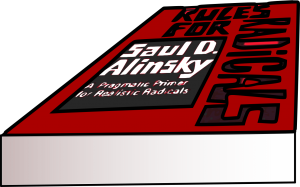A Christian Assessment of Saul Alinsky
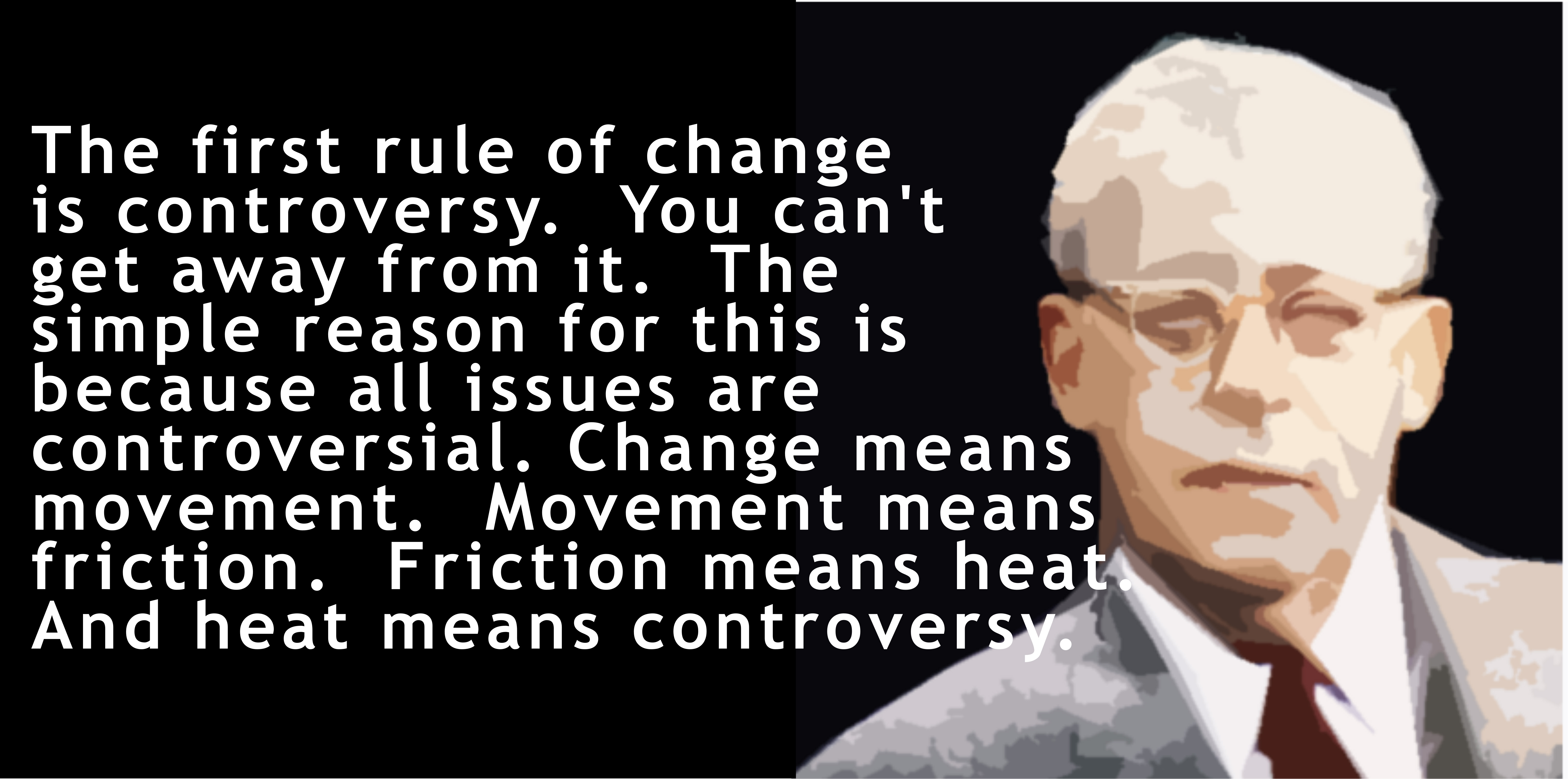
Rochester, New York 1964
Saul Alinsky sat at a table in one of Rochester, New York’s finest restaurants. His hosts, three of the city’s leading ministers, were dining with him. Table service was slow on that evening in 1964. The clergy apologized to their guest for the server’s inattention. Alinsky said, “Do you really want her to come over here?” He took one of the empty dinner plates, held it high in the air, and then smashed it on the floor. Flushed with alarm, the waitress came running to the table.
This post has three parts. First, I’d like to introduce Saul Alinsky to those unfamiliar with him by telling the story of his work in Rochester. Second, I’d like to summarize his major ideas. Third, I’d like to explore how his work reflects some Christian values and falls short of others.
A broken dish was a small thing in comparison to the bloody race riot that had convulsed Rochester the previous summer in 1964. Before the disorder was over, police had arrested a thousand rioters. Four people died in the melee. A thrown bottle took away one police officer’s vision.
Violence had been on its way to Rochester for a long time. In those days, most of the city’s Blacks held low-pay jobs and lived in squalor. Rochester had deep minority unemployment and a dead last position among New York’s towns in implementing a public housing program. In contrast, the city’s main employer, prestigious Eastman Kodak, enjoyed a reputation as a high tech innovator, a place to build a career, and a generous community benefactor. Behind this facade, however, was an attitude toward Blacks that subtly tinged the entire city.
This is why several left-leaning Rochester clergy invited the original community organizer, Saul Alinsky, to come to town. In the mid-1960’s, Saul Alinsky was hard to categorize. Armed with a prestigious University of Chicago education and the street smarts of a union organizer, Alinsky was a life form that flourished in the petri dish of 1960’s social upheaval. The ministers saw Saul Alinsky as just the person to harness the rage in Rochester’s slums and aim it directly at Kodak’s bosses.
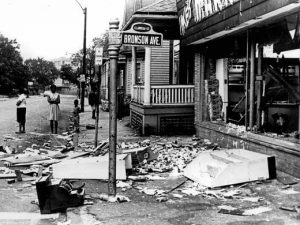
The campaign started when Alinsky’s organization purchased 100 seats at the city’s crown jewel symphony hall and gave the tickets to city have-nots—to use his generic term for the oppressed. Suited up for an evening of high culture and with tickets in hand, the concertgoers began the night with an Alinsky-style complimentary dinner, which featured copious amounts of baked beans. The resulting “flatulence blitzkrieg” proved to be just the kind result that had the combined virtues of getting attention, disrupting the normal course of things, having the potential to be deployed far into the future, and being completely legal. Alinsky was later to write in his book, Rules for Radicals, that community organizers need to remember the human face. Remember the eyes. If you have a large group of supporters, parade them before the power structure. Lacking a big crowd, remember the ears. Make a lot of noise. They may think the movement is bigger than it really is. If you don’t have much at all, think of the nose, and stink up the place.
After weeks of standoff, Saul Alinsky’s war of wills succeeded in nudging Kodak and city elites to the negotiating table. City officials, corporate managers, and the poorest residents reached a compromise. Kodak awarded jobs to Blacks. Kodak supported city government concessions on education, housing, municipal services, and urban renewal.
These gains did not come after one memorable symphony concert. Rochester’s elites held out a long time and refused to make concessions right up to the time that Alinsky turned loose his final ingenious tactic. This invention of Alinsky was one that not only shook Eastman Kodak but the corporate world in general. During the weeks that Alinsky was in town, Kodak held its annual shareholders’ meeting in tiny Flemington, NJ. “How might,” Alinsky asked himself, “those powerful shareholders be shaken up enough that they would take seriously the plight of Rochester’s poor?” An exquisite idea popped into Saul Alinsky’s mind. He feverishly phoned every left-leaning, middle-class friend in his phone book. These were usually university big-wigs and progressive donor-types. He talked them into assigning to his organization their Kodak shareholder proxies. The Alinsky gang then jumped into cars and drove to New Jersey to participate in Kodak’s annual meeting. Of course, Alinsky, with a handful of proxy votes, would be unable to sway business decisions. Nevertheless, those proxies entitled him to speak at the meeting. With nervous corporations across America looking on, Kodak began to negotiate.
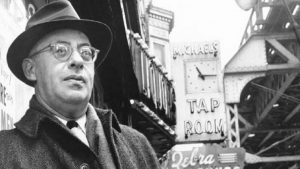
My Interest in Saul Alinsky
I became interested in reading Rules for Radicals, as an accompaniment to the legwork I’m doing for the Margaret Good campaign for a Florida statehouse seat. I’m phoning, canvassing, and thinking about social change. Political advocacy is new for me. I’ve been on both sides of the political spectrum since I cast my first vote in 1974 for Richard Nixon. I’m wondering how politics squares with my Christian faith. This is a new problem for me. It comes after four decades of weekly preaching and parish ministry, a career I began when I was 26. In the churches I’ve served political activism is incompatible with ministry, at least long-term ministry. I’ve been careful not to inject partisan jabs into sermons because when I look out over a congregation I know that both Republicans and Democrats are looking back.
Reading Rules for Radicals feels like a form of thought crime. I would chuckle at some of Saul Alinsky’s antics and feel empowered to learn his tactics. But as I read, the disapproving voice of my parents, both deceased, reverberated in my thoughts. “What could Doug possibly find attractive in this vile character?” Conservative thought leaders like Dinesh D’Souza or Newt Gingrich have made lengthy YouTube videos insisting that Alinsky was bent on upending the American Way of Life. Ben Carson thinks he is in league with Satan. For a moment, these warnings flooded me with fear that an intellectual swindler had duped me and that readers of this post would think I’d lost my mind.
At length, I decided that the political right is not entirely of pure motive in condemning Saul Alinsky. As it turns out, both Hillary Clinton and Barack Obama studied Alinsky in their formative years. In the 1980’s, Barack Obama did his own community organizing in the Alinsky tradition and wrote approvingly of him.
The effort to make Alinsky radioactive and then tie him to political opponents is a good tactic. Actually, it’s a good Alinsky tactic. The truth is that the political right appreciates Saul Alinsky. Right Wing icon, William F. Buckley, called him an organizational genius and debated him on his television show, “Firing Line.” More recently, Dick Armey handed out Rules for Radicals to Tea Party leaders, and a shortened version, Rules for Patriots, to Tea Party regular members. Saul Alinsky died in 1974. His ideas, however, continue to get the kind of attention that that smashed dish did back in the 1960’s.
What Did Alinsky Actually Do?
Saul Alinsky studied archaeology in college, however, the Great Depression prevented him from becoming an academic archaeologist. He worked for the State of Illinois as a criminologist and did part-time work as a labor organizer with John Lewis’ Congress of Industrial Organizations (CIO). The 1930’s were strong years for the burgeoning American labor movement. Alinsky, a brilliant innovator, carried the idea of union organizing to neighborhood organizing. He deserves credit for inventing community organizing.
His work took this shape: Alinsky would enter into any situation where there was blatant oppression of have-nots–be they the poor or a low-status minority population. He would talk with as many in the community as possible in an effort to create an organization. Whoever might share a common struggle would be pulled into his organization—street people, beauty parlors, churches, workers, Blacks, and other ethnic groups.
Alinsky was uncouth but never violent. He worked within the law, particularly within the spirit of the American Constitution.
Once a group was gathered, Alinsky would agitate. In other words, he would gin up people’s resentments and fan their anger. The point of agitating was to bring to the surface one or several specific issues—the need for higher wages, childcare, or more police protection–that would improve the life quality for some or all members in the group. Then, and this was Alinsky’s signature quality, he would come up with some disruptive behavior—something like dumping garbage on someone’s lawn or stinking up a concert–that would drive the bosses or officials to negotiate and presumably to improve the conditions for members of the coalition.
Every situation that Saul Alinsky dealt with was different. He adapted his method to each situation. He began his work in his hometown, the South Side of Chicago. As his reputation spread, community leaders, often Catholic and Presbyterian clergy, invited him to organize in places like California, the mid-West, and even among Native Americans in Canada.
Valuable Elements in Rules for Radicals
At first, I thought that the well-known list of 12 radical tactics would correspond with Rules for Radicals’ chapter structure. This list, however, doesn’t appear until the middle of the book after the author has laid out some of his core philosophy. This early part of the book was much more interesting to me than the tactics. I’ll expand on three of Alinsky’s basic ideas.
1. The Power of Organization
Saul Alinsky always started by bringing people together. If have-nots can unite they feel encouraged they are more powerful as a group. Unfortunately, people in distress tend to carry on without talking with one another. Jobless youth or people denigrated by the dominant population may become so angry that their anger boils into a riot. Rioters, however, are not powerful because their energy is uncoordinated. Where anger doesn’t reach the level of violence, neighbors in a blighted city district may feel resignation. They may be depressed, silent, passive, and suffer from loss of their humanity. Drugs and crime beckon them. They dissipate their grievances longing for some hero to take care of them. Yet their situation stays the same. The heavy-handed boss or rigged economic system has a much easier time keeping them subjugated when they are not talking with one another nor forming groups. Saul Alinsky’s first step was to break up a group’s habit of staying apart. The organizing stage of Alinsky’s process was as gritty as the conflict stage. He would talk roughly with them, prod them, and then agitate in order to unite them in their rage. He would then direct their attention to specific issues. Once formed, a coalition gave people much more power that they could focus on improving their situation.
2. Conflict
Alinsky’s thoughts on conflict are both sobering and liberating. There’s a popular saying of uncertain origin: “…the price of liberty is eternal vigilance…” Saul Alinsky might say, “…the price of liberty is eternal conflict…” In Rules for Radicals, the author describes the cycle of organizing, agitating, and confronting power as a Sisyphean labor. He admits that being an organizer monopolizes a person’s life and pushes marriage and kids to the side. Keeping pressure on the company or oppressor is like the siege of a fortress. Victory comes when the oppressor’s will-power collapses and he reluctantly begins to negotiate for small changes. There is no rest. With time, leading and planning for an organization passes from the organizer to local participants. The tasks, nevertheless, never change. Liberation Alinsky-style calls for the organizing and agitating boulder to be pushed up the hill endlessly.
…the price of liberty is eternal conflict…
When I was a child, I overheard someone on television say: “People are most free in situations where there is entrenched conflict.” To me, that meant that when politicians debate or workers strike, they’ve directed energy on one another and not on regulating people’s lives. When everything is calm, tyrants can meddle and exploit unchallenged. Discord, used rightly, has a productive function.
A stuffy religious college once invited Saul Alinsky to speak. The students complained that the school was so strict with rules about dancing, dating, curfews, and dress code. Campus life was boring.
One student said off-handedly, “The only thing the administration lets us do is to chew gum.”
“That,” Alinsky said, “is your key.” He went on, “Get 200 or 300 students to buy two packs of gum each. Chew both packs simultaneously every day, and then spit out the wads on campus walks.” He told them, “Keep it up until the rules were loosened or abolished.”
The tactic worked. It took about two weeks for the college to revise the rules. The over-strict campus became much more relaxed. One new rule was substituted: no gum on campus.
Alinsky detested passivity. He preferred conflict to aid for have-nots. He despised public welfare, preferring to see have-nots agitate for their own rightful place in a free society. He quotes Tocqueville: “…Self-indulgence accompanied by concern for nothing except personal materialistic welfare [is] the major menace to America’s future.” It’s in this call to purposeful conflict that Alinsky comes closest to the heart of an American revolutionary spirit
3. Means and Ends
I can just hear my Father’s disgust with Alinsky’s smashed dish stunt or gum campaign. He would say, “It’s not constructive. It has no class. It’s immoral.”
What about the hooligan tactics? No one knows better than Alinsky that throwing gum underfoot is disruptive. Accordingly, he devotes a fair number of Rules for Radical’s pages to reflect on and defend such behavior. He uses the phrase, “means and ends.” He is saying that the end justifies the means. In other words, the oppressor’s wickedness needs to be soberly considered. It is a huge evil when poverty hobbles communities or where low wages blight thousands of households. If pranks like stinking up a music hall can force a change in large evils, it’s immoral not to engage in them. Alinsky berates people who are won’t budge to improve their living conditions because they’re obsessed with being legal, obedient, and polite. People who look on passively so they don’t have to suffer a demerit on their etiquette report card while an oppressor ruins people’s lives is complacency with evil.
This raises a question. What kind of activist is Alinsky? He was not a Marxist revolutionary as many of his critics insisted. Alinsky was uncouth but never violent. He worked within the law, particularly within the spirit of the American constitution. As I read Rules for Radicals, I thought of it as Midrash on the Bill of Rights. Alinsky was uniquely American. In fact, it’s hard to imagine much in his method that would work outside the United States. In many places, Alinsky’s antics would be answered with gunfire.
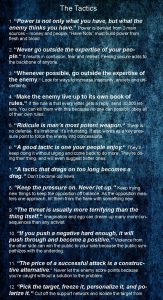
A Christian Assessment
Reading Rules for Radicals is a delicious distraction. I’ll admit that it is satisfying to read story after story of how community big shots were out-maneuvered and forced to capitulate. Alinsky was the rare leader who could nudge the people in charge to do what they loathed, namely to sit across a bargaining table with their victims. Surely, his was a noble life. He used energy, intelligence, imagination, and love, and was always greeted with much scorn and little praise.
He used energy, intelligence, imagination, and love, and was always greeted with much scorn and little praise
The measure of Saul Alinsky must focus not on the whiff of flatulence wafting through the black-tie crowd, but on the 19-year-old, inner-city kid, newly hired by Kodak, holding his first paycheck.
I read Alinsky with a growing realization that his life’s project ran parallel to that of biblical faith. At first blush, it may appear that Christian faith and community organization are different sorts of endeavors. After all, religion focuses on heavenly things; activism does gritty business in the streets and shop floors. But if we take a 50,000-foot survey of the Bible’s full sweep, its liberationist contours rise above its otherworldliness. Alinsky was a liberator.
He was the 1960’s Moses who wanted hard-living people to take control of their lives and struggle to reclaim their dignity. He was the new leader who brings the workers together. He sows discontent. He calls down a series of maddening setbacks, which brings regimes to their knees. Like Moses, he’s the one who negotiates with an unnerved establishment.
Alinsky reminds us of the ancient prophets. He was the finger in the king’s eye, the one who shined truth’s light into the darkness where oppression festered. Like Hosea, Jeremiah, and Micah, Alinsky ridiculed those who had convinced themselves that they were the nation’s saviors.
The fact that Catholic and Presbyterian Churches hired Alinsky to carry out their ministry to the have-nots in their own neighborhoods strikes me as an acknowledgment that the church’s mission aligned with his. Here’s what I don’t get: “Why didn’t the churches tackle the task of helping their hard-living neighbors themselves?”
We would be close to biblical Christianity’s beating heart if we could remember three words: “Jesus means freedom.” These unscholarly words are not mine, but those of New Testament scholar, Ernst Käsemann. Each episode in Jesus public ministry unlocked some kind of door. His parables freed thinking. His healings cast off physical limits. His actions loosed religious restraints. His miracles put money in pockets. Above all, Jesus’ death and resurrection took liberation to a cosmic level. The death delivering from guilt. The Resurrection released people from death itself. Saul Alinsky efforts fell pathetically short of what Christians celebrate in their faith. But at least Alinsky dared to try. Looking at his life is like watching Saint Peter stepping out of the boat and attempting to walk on water. Peter succeeded just enough to make Jesus look even more amazing. Alinsky succeeded just enough to make Jesus look even more amazing.
Some Criticisms
Because Alinsky’s efforts align with biblical faith, we’re in a position to see his limits and to offer an estimate of his value to followers of Jesus. I’ll confine this assessment to four areas:
Alinsky’s Rules for Radicals envision no Promised Land. Alinsky is Moses in Egypt but not Moses in the Wilderness. A key theme that threads through the Old and New Testaments is that history presses to a glorious end. The Promised Land in the Old Testament is echoed and amplified in Jesus’ Kingdom imagery in the New. Actually, Jesus’ followers don’t have to wait until the end of all things to enjoy the God’s New Order. Jesus came preaching that the Kingdom was already present. Crucial to the Christian ethos is the paradoxical imperative to relax and rest, while also striving.
Saul Alinsky, in contrast, is a brilliant tactician without an overall goal. His method’s cyclical pattern of action, endlessly alternating struggle with compromise, places onerous responsibility on organizers’ shoulders. And in the end, there’s no peace at the end of the battle. One Christian image of fulfillment a grand family reunion seated at a table with Jesus at the head.
Saul Alinsky, is a brilliant tactician without an overall goal
This reunion of all peoples is the glorious goal of Christian striving. Christians give themselves a foretaste of that great day every time they sit down to the Lord’s Table. There’s no feast in Alinsky, only the next situation to organize and agitate.
Alinsky’s program dispenses with ethical details. Alinsky says to his followers, “Don’t sweat the ethical small stuff, which only gets in the way of the big moral victory. His typical pep talk would sound something like this: “Look do you want to live this way forever just because you don’t want to violate your moral virginity? Or do you want to smash the damn plate and a hundred damn plates and call the boss a bastard and get the paycheck you deserve?” Often he was successful in rousing his troops, who would set aside their own best selves as they spit gum out for everyone to step in.
Christian liberation asks no such behavior compromise of its missionaries. Jesus emphasizes deportment for those who go out in his name. He deploys his emissaries with neither cash nor baggage. Sermon on the Mount ethics are best understood as implementation practices for Jesus’ people under deployment. Don’t disrespect people. Don’t be angry with anyone. Don’t lust. Don’t strike back. Greet people who despise you. Pray for enemies. Carry the burden for twice the distance.
If I were to train in Alinsky’s method, the most difficult part would be to shed the fine points of dignified behavior—speaking sweetly, seeking reconciliation, and trying to govern my thoughts—in the interest of the big principles of living freely and getting my due. To train with Jesus, on the other hand, would confront me with the impossible demands of one who thinks I’m more of a saint than I do.
Alinsky’s Method is Uniquely American. In some places, if activists dumped garbage on a despot’s front lawn, it would be their last stunt before being marched to the gallows. This is a limitation. Saul Alinsky’s rules only apply where there are bigger rules that allow his antics, namely, in a constitutional democracy. One of his tactics, “Make the enemy live up to his own book of rules,” explicitly states that attention-getting stunts only work when leaders, hogtied by law, won’t retaliate. The American Constitution makes a safe space for prophets and protesters to stir things up. The Bill of Rights pushes back boundaries, particularly restrictions on speech and assembly, to include social activists like Saul Alinsky. The world’s dangerous countries, lands under dictators, must rely on revolutionary violence or pressure from other nations to gain freedoms.
Christian disciples can function in polite societies or tyrannies. The four gospels record a surprising number of occasions when Jesus prepares his followers to go into dangerous situations. He tells them how to speak when dragged before despots. He gives them lists of what to carry and what to leave behind. He tells them what to do when rejected and even when housed in less-than-best lodging. He tells them to adopt an ethos of sly but innocent behavior. He tells them that ultimately they’ll have to pick up their own cross, as he does. The Alinsky-trained organizer can’t succeed without wits and a tough hide. The Jesus-trained Christian might face violent retaliation, but nevertheless, triumphs. In the earliest years after Jesus left his earthly work, his followers spread out and converted about half the people in the oppressive Roman Empire. Persecution eased in the early 400’s. Jesus’ plan for his followers carry their message to the entire world, also makes the scope of Christian direct action obvious.
Conclusion
Saul Alinsky’s embodied his own fresh version of the American character
In sum, Saul Alinsky embodied his own fresh version of the American character. He did his own thinking. He was a man for others. He found much to criticize, but expected the future to be good. He horrified elites, who read him anyway and used his tactics. He made people laugh by making bosses mad. He showed us how to lower ourselves for a high cause. He left us, in his final book, a wise summation of his method. Above all, he reminded us of the importance of breaking free from every bully and rule that keeps us from living as God intended.
